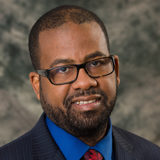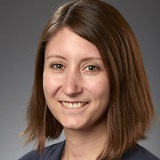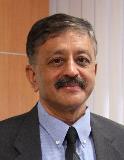Leonard Brillson
Editor, INTERSECTIONS
Member, Government Affairs Committee
Welcome to our INTERSECTIONS Newsletter!
Since our last newsletter, major legislative events on Capitol Hill have occurred that directly affect federal support for our science and technology community. The MRS Government Affairs Committee (GAC) aims to understand the dynamically changing legislative policy environment and its impact on materials research.
GAC Chair Kevin Whittlesey emphasizes the importance of science advocacy in facing these challenges, challenges that directly affect us.
Our MRS Washington consultant Damon Dozier describes the impact of legislation just passed, the continuing resolutions that Congress is likely to pass, and the effects of both on scientific research funding agencies.
Brent Carey, our Grassroots Subcommittee Chair, reports on the effectiveness of our Materials Voice letters to Congress, especially in helping protect our university graduate students.
In the Fellowship Corner, Ashley White describes how our two new MRS Congressional Fellows are getting up to speed, working in the offices of their Senators.
Bill Hammetter relates how the GAC Congressional Visits Days have allowed MRS leadership and GAC committee Members to speak directly to Congressmen/women and their staffs about the importance of support for science since, as Bill says, “Science does not speak for itself.”
Government Agency Subcommittee Chair Diogenes Placencia relates his concern for improving face-to-face communication between our Members and government agency leaders at MRS meetings.
Finally, Subbu Venkatraman’s INTERSECTIONS article on value-added materials science in this issue features yet another success story, highlighting how investments in materials science pay off in ways that the public and especially our elected officials can relate to.
MRS is working hard to make sure that the materials research community is being heard and that it has input in developing effective government policy for support of materials science. Here is the latest news.
Government Affairs Committee Chair News—The Importance of Science Advocacy
 Kevin Whittlesey
Kevin Whittlesey
Chair, Government Affairs Committee
As we look back on 2017, the past year was very challenging with respect to science advocacy. The current Administration does not appear to be prioritizing science. Many important science-related positions across the government remain unfilled. House appropriators recommended altogether eliminating ARPA-E from the budget. In addition, at the end of the year, there was a direct assault on graduate students, in the form of language in the tax reform bill that would have significantly increased the tax burden on many graduate students, a vital component of the research enterprise. These are but a few of the challenges that the science advocacy community faced in 2017. There will surely be many more challenges ahead.
We recently issued a Public Affairs Alert regarding the graduate student tax provision, calling for MRS Members to write letters to their legislators to express concern. That outreach was well received by our Members, resulting in more than 700 letters to Congress on this important topic. Let there be no doubt – advocacy letters to Congress from constituent voters are effective, especially when they are sent in large numbers. I expect there will be additional issues in 2018 for which we need to issue similar calls to action. GAC will work to ensure that Members are kept apprised of important issues, and it will be critical for Members to respond to future actions recommended by the GAC.
As the political climate in Washington ebbs and flows, it is important that we continue to engage as many MRS Members as possible in our advocacy efforts. Training MRS Members to be effective advocates is critically important, and rotating as many Members as possible and bringing in new ideas and different perspectives are important. We know that as the political climate becomes more challenging, the role of GAC and engagement of MRS Members in GAC activities will become more important. I look forward to including a broader cross-section of the MRS Membership in our advocacy efforts in 2018.
What's Happening in Washington
 Damon Dozier
Damon Dozier
MRS Director of Government Affairs
After a summer period that saw little or no movement on must-pass appropriations legislation, Congress was forced to pass two continuing resolutions (CR), the last of which will keep the government open until January 19. The short-term funding bill also extends a federal surveillance program, includes money to continue the Children's Health Insurance Program through March, and waives automatic cuts to Medicare and other programs, which were threatened because of the recently-passed tax reform bill and its addition of $1.5 trillion (spread out over several years) to the federal deficit.
The House had completed its work in terms of drafting appropriations legislation, but the Senate has not nearly been as active. Overall, the House bills call for increasing federal spending on basic research by about 2.6%, to $35.6 billion, in 2018, according to an analysis by the R&D Budget and Policy Program of AAAS. Much of that increase would be dedicated to defense and health research. Unfortunately, however, while Congress debates spending bills, federal agencies that fund materials science research (Department of Energy, National Science Foundation, National Institutes of Standards and Technology, National Institutes of Health, etc.) face a bundle of hurdles in dispersing much-needed funding dollars to the materials science community. Under a CR, federal agencies are forced to spend dollars at the level that they were funded in the previous year. Some agencies, which faced funding cuts under the President’s budget proposal, spend even less as they try to work in concert with the Administration’s proposal. Some funding offices within agencies (such as the Advanced Research Projects Agency-Energy program within DOE) face additional threats that were eliminated in one version of a funding bill (i.e. the House) but were preserved in another version on the other side of the Capitol.
Congressional leaders are eyeing a deal to raise budgetary caps by as much as $200 billion over two years, as an approved defense authorization package is $77 billion higher than the 2018-budget cap. A deal on budgetary caps will be a first step toward hammering out a spending deal for 2018. Democrats are clamoring to raise non-defense spending caps by the same level as defense caps. Current spending levels are higher than the 2018 caps set by the 2011 Budget Control Act. Without a deal to raise the caps, continuing spending at current levels would trigger sequestration, or across-the-board spending cuts, starting in late January.
MRS has advocated for full funding of federal research and normal order in terms of the passage of federal funding bills. Our government affairs team continues to do so, and we will update our INTERSECTIONS readers as events transpire.
Grassroots Subcommittee Chair News—MRS Grassroots Advocacy
 Brent Carey
Brent Carey
Chair, Grassroots Subcommittee
It has been a month since the 2017 MRS Fall Meeting, and I am pleased to share that we had another effective letter‐writing campaign! A total of 1,855 letters were sent to congressional offices and to the President on three topics of particular importance in R&D and materials research. Our letters included the familiar topic of promoting sufficient funding for scientific and technological research, as well as a focused ask in protecting ARPA-E in the upcoming budget – this DOE advanced energy projects agency was treated very differently by Congress and the President in budget proposals, spanning a zeroed out request from the President to full funding in the Senate bill.
Additionally, our third letter addressed the lack of appointments for numerous technical advisor posts in the federal government – including the director of the White House Office of Science and Technology Policy (OSTP). This office directly advises the president on matters directly related to science & technology, and it is indeed alarming that no nominees have been publicly announced. Overall, this lack of appointments severely hinders communication on technical matters too, from, and within federal agencies.
On a similarly concerning but ultimately celebratory note, shortly after the Fall Meeting the Grassroots Sub-Committee coordinated a fourth letter on the topic of the impending tax overhaul bill, H.R. 1. Specifically, included in the draft legislation was a provision that would tax all graduate students for their tuition waivers in addition to their stipends. On the average, this would have more than tripled the tax burden of graduate students nationwide; but due in part to the 728 letters that were sent to the President and Congress by MRS Members, this verbiage was ultimately removed from the bill. Your advocacy in action!
There is still work to do, but it is quite encouraging to see progress on the topics that we have been vocal on. Your letters can indeed help drive progress on these issues, so thanks for your participation!
MRS Congressional Science & Engineering Fellowship Corner
 Ashley White
Ashley White
Chair, Congressional Fellow Subcommittee
The two 2017–2018 MRS co-sponsored Congressional Science & Engineering Fellows are now four months into their fellowships on Capitol Hill and have settled in after a federal government orientation provided by the American Association for the Advancement of Science (AAAS) and Congressional office placement. They report they are learning a lot about the legislative process and are already making significant contributions to their offices.
Sarah Vorpahl (MRS/OSA Fellow) is working in the office of Senator Bernie Sanders (I-VT), covering energy and environmental issues, particularly focusing on disaster relief in Puerto Rico, arctic drilling, and tribal issues. She is enjoying meeting with the many groups doing front-line environmental justice work often in the most marginalized communities in our nation. She looks forward to learning more about how we can use policy to help ensure that everyone has access to the clean air, water, and energy they deserve.
Scott Litzelman (MRS/TMS Fellow) placed in the office of Senator Ron Wyden (D-OR) covering energy storage, energy efficiency, grid modernization, and resiliency. He is enjoying seeing firsthand how Capitol Hill works, including balancing the more reactionary parts of the job (e.g., responding quickly to the news of the day) with the strategic components (e.g., brainstorming and building support for potential legislation).
An informational session on the fellowships was held at the 2017 MRS Fall Meeting in Boston, with a record turnout of more than 40 attendees. Sarah Vorpahl was able to attend the meeting and provided a fresh, first-hand account of the fellowship to the prospective applicants. She and I also recorded an MRS TV interview on the fellowships.
The selection process for next year’s fellowship is already getting underway. The January 5 application deadline has just passed, so we are starting to review applications and looking forward to getting to know the next crop of applicants.
Spring Congressional Visits Day—Science Does Not Speak for Itself - Part I
 William Hammetter
William Hammetter
Chair, Congressional Visits Day Subcommittee
That simple statement, “Science does not speak for itself,” is the basis for the MRS Congressional Visits Day Subcommittee’s advocacy efforts to maintain and enhance federal support of fundamental research. The Subcommittee organizes two visits to Capitol Hill each year, one in spring and another in fall. In spring, we invite and support twenty to thirty MRS Members who work or reside in “targeted” states or congressional districts to come to Washington, D. C. to visit their Senators and Congressional Representative (usually their staffers) and present to them personal stories of how results of fundamental research have benefited their state/district. Each MRS visitor is equipped with a standard “ask” to request specific (desired) action from the legislator, some MRS generated “talking points,” and a folder of supporting documentation. The fall CVD brings the MRS board Members and MRS elected officers to Washington to meet with legislators and selected Agency Heads. Our “targets” for each CVD are the lawmakers, based on their committee assignments, that influence appropriations for fundamental research and, especially, those that influence budget authorizations for the agencies that support materials-related fundamental research.
Recently, the Congressional Visits Day Subcommittee proposed what we call “In-District” visits. Briefly, we propose that a select group of MRS Members visit the local (in-district) offices of their Senators/Representatives (staffers) throughout the year to deliver the same MRS message as would be delivered during a Capitol Hill meeting. We believe that these in-district visits will allow an opportunity to deliver and amplify our message, i.e., more than twice per year, provide an opportunity for more timely messaging, strengthen the relationship between MRS and our legislators, highlight the local impact of our messaging, and better target selected legislators by avoiding MRS member conflicts with the specific date of the Washington CVD. Although our MRS Congressional Visits Day has successfully conveyed the positive impact of materials science to Congressional offices, one practical challenge to be addressed is that the cost of bringing 20-30 MRS Members to Washington, D.C. (travel, hotel, food) is now outpacing the MRS budget for this advocacy effort.
With the help of Damon Dozier, and MRS Headquarters staff, the CVD Subcommittee Members have begun “testing” the in-district” visit model. We are ever mindful of preserving the MRS “brand,” and the high standard MRS has set for these visits. “Science does not speak for itself - Part II” will report on the initial testing of our in-district visits.
2017 MRS Fall Meeting—
Conversations with Government Agency Representatives Regarding Funding in Research

Diogenes (Dio) Placencia
Chair, Government Agency Subcommittee
Hello from the Nation’s Capital!
Dear Members, It has been quite a couple of months! With all of the talk in D.C. about travel bans and how they would affect our Members, an important research agency to the Materials Community (ARPA-E) under constant threat of being shut down, and the newly passed tax bill almost removing the exemption for graduate students on their tuition…I feel like we’ve been put through quite a lot, and am sure that we’re all pretty exhausted on many levels…so let us take a moment to acknowledge the tough fights we as a Materials Community have been put through.
With this being said, it is now more important than ever to be engaged and ready to do all that is necessary to defend the institutions and provisions that the Materials Community needs to advance the state of science within all of our respective sub-fields. The engagement on your end involves contacting your elected representatives, engaging in social media, and communicating to others outside of our community the importance of the work you all conduct on a day-to-day basis. Unfortunately, we can no longer afford to sit idly by and assume that our elected officials will have the foresight to do what is best for advancing the state of science. The engagement on the end of our Subcommittee is quite clear: to provide our Members the opportunity to engage one-on-one with Agency Program Managers (PMs). As you all know, competition for funding continues to get higher-and-higher as a result of the ‘belt tightening’ that has been underway for quite a number of years now. Hence, being able to interact with these PMs could be the edge necessary for a successful proposal.
Over the last couple of cycles, we have tinkered with the formats of the Research Funding Opportunities Sessions, in the hopes of optimizing your experience for successful grant submissions. The survey reports we received so far are quite clear—more face time, less fluff. This past meeting, the Sessions were received with an overwhelmingly positive response. Although well received, there were three important elements of the Sessions that were missing:
- Roundtable discussions
- The ‘one-stop-shop’ setup
- All sessions condensed into one day
Although these might seem like benign points, as an outside observer, I could see how Members were not experiencing the full benefit of the Sessions—and I was not happy. It is important to highlight the roundtable discussions with three points:
- Provide a forum for Members to sit and ask questions to PMs in a small group setting, therefore allowing for other Members to get exposure to the dynamic conversations which normally don’t occur in a presentation-like setting. In concert with this aspect ties in the ‘one-stop-shop’ setup…
- Allow Members to float between PMs within one location. This setup prevents confusion on location, an organized mechanism for interacting, and overall lowering the barriers for interaction.
- Most importantly, having all sessions condensed within one day. It is key to have maximum exposure. From historical data, we’ve noticed that attendance during our Thursday slots is significantly lower, which is a combination of factors like reduced attendance later throughout the week, poster sessions during the Session, and quite frankly, the uptick in social interactions between Members as the meeting progresses (I myself partake in such activities!). Therefore, it is crucial for our Session to take place during one day, condensed within a specific timeslot.
Marching into the 2018 MRS Spring Meeting, we as a Subcommittee will try our hardest to make sure that your experience is paramount, and will ensure that we implement these points mentioned above…because it is now more important than ever for us as a Subcommittee to get this right…the state of Materials Science is on the line, and most importantly, your livelihoods are on the line.
So…as we start the New Year, remember that your Operating Committees are here to serve you (visit the MRS website and check them out!). Reach out, let us know how we can improve upon our duties, and share your thoughts on anything that can advance the state of our Society. With that, I charge all of you with the task of contacting not just us, but also the people whom you’ve elected as your voice in Washington, D.C. The task of advancing Materials Research involves not just a laboratory effort, but also a political one. We fought hard against these threats to our Society, but the fight has just begun; Bear Down! Until next issue.
A Value-Added Materials Research Story—Mending “broken” hearts with biomaterials

Subbu S. Venkatraman
Professor, Nanyang Technological University, Singapore
Revolutions in cardiology are driven by materials. Witness the first revolution: the invention of a metallic slotted tube (called a coronary stent) revolutionized the treatment of blocked coronary arteries in 1993. The inventors (Julio Palmaz and Richard Schatz) initially used copper wiring, but then switched to stainless steel, making clever use of the plastic deformation in metals to expand the stent and to anchor it in a blood vessel, thus keeping it open for blood flow. The whole procedure took less than an hour, as the stent was inserted in the unexpanded state, through a small incision in a leg or arm artery, guided to the blocked site (using X-ray, which easily detects the stainless steel), and expanded.
A follow-on to this revolution was the drug-eluting stent, approved in 2003. This overcame some of the re-blockage issues with the bare metal stent, with a coating that contained a drug. The drug was released into the blood vessel tissue and prevented cells from wantonly multiplying in the stented area. Unfortunately, this created a problem called delayed healing, which meant that the patient had to be kept on anti-thrombotic drugs for 1-2 years: this problem was due entirely to the presence of the stainless steel in the artery, causing it to clot blood. Therefore, a number of cardiologists felt that the best solution to the problem was a stent that “disappeared” after it performed its intended function of unblocking the artery for a period of about 6-12 months. Such a stent can only be realized with significant advances in biodegradable materials.
We, along with others in USA, Japan and Europe, worked on this concept of a material that would be strong mechanically for 6-12 months, then slowly disappear after being covered by blood vessel cells. Our early work on optimizing the shape memory while maintaining mechanical strength, was published in 2003. Following in silico and in vivo studies, a spin-off company (Amaranth Medical) was formed in 2006. Meanwhile, Abbott Vascular had designed and developed a fully degradable stent called ABSORB™ GT1 that was the first to win FDA approval in 2013. Problems with the deployment and the mechanical characteristics led to its withdrawal in 2017, but Abbott continues its work on an improved 2nd-generation stent. Amaranth Medical’s FORTITUDE® APTITUDE® and MAGNITUDE® fully resorbable stents use a special high molar mass polylactide which exhibits good mechanical characteristics: suitable manipulation of this stent material allows stents with thinner struts to be developed. Going from FORTITUDE™ TO MAGNITUDE™ lowers the strut thickness by 40%, leading to a sub-100 micron stent that will improve performance in vivo. The arrow diagram from the Amaranth website illustrates materials advances that led to these strong thin struts. Thinner struts are expected to considerably improve stent performance and lead to fewer adverse events over time.
Following our work on fully degradable coronary stents, we became interested in other cardiovascular implants that were also only needed temporarily in the body. A prime example of such a device is an “occluder” device needed to plug certain unwanted holes in the heart. Examples of such unwanted holes are the patent foramen ovale (PFO) and arterial septal defects (ASD). These are congenital defects that usually go undetected until there is a catastrophic event; more regular screening of children will avert this problem provided there are ways to plug the holes once detected. Currently, the plugs are made of Nitinol alloys, which have unique shape memory properties that enable its non-invasive deployment in one shape and then expanded into a second shape at the “hole” thus plugging it. Unfortunately, Nitinol is non-biodegradable, and that leads to problems such as Ni allergy as well as inaccessibility to one side of the heart for other interventions: an ideal solution will be a biodegradable material that plugs the hole, enables cells to cover it fully and then slowly disappears. Again, such a device would greatly improve the quality of life for pediatric patients, and help to mend young “broken hearts”. We have developed several device designs using fully degradable polymers with high elasticity, and published the work over the last decade. However, translation in this area is hampered by the perception of a smallish market size. Current sales of occluder devices are well under $100 million worldwide, and attracts the attention of very few investors. Nevertheless, we continue to explore the possibility of going to the next step (a clinical trial) with Chinese companies as partners. If we are successful, surely there will be many happy patients with “healed” hearts! That, surely, is rewarding enough for such materials-based innovations.
Feedback
We welcome your feedback and invite you to submit topics for consideration in future issues of this newsletter. If you have or know of stories that illustrate how an investment in materials research paid off in real dollar terms, please send your suggestions to INTERSECTIONS Editor, Len Brillson, at [email protected]. Please send your comments to [email protected].
Sign up for MRS newsletters and alerts by visiting My MRS. There you can login or create an account, and select INTERSECTIONS under Public Policy to receive this quarterly newsletter via email.
Not a current MRS member? It’s never too late to join or renew.